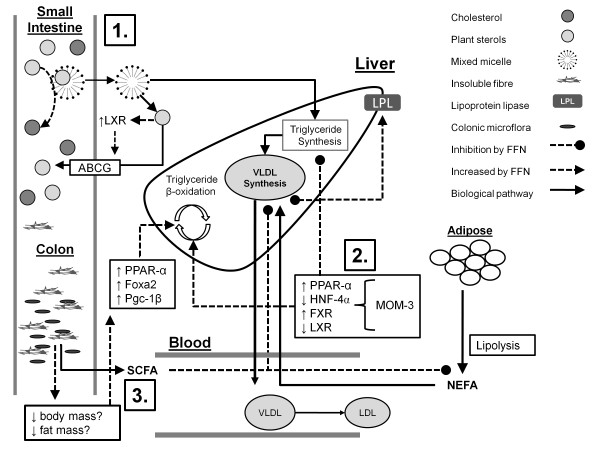Figure 1.
Mechanisms by which plant sterols, marine-derived omega-3 fatty acids, and insoluble fibres decrease dyslipidemia. 1. Plant sterols (PS) displace dietary cholesterol from mixed micelles. Absorbed PS activate liver X receptor (LXR), increasing the expression of ATP-binding cassette G transporters (ABCG) which pump absorbed PS back into the intestinal lumen. 2. Marine-derived omega-3 fatty acids (MOM-3) increase the expression of peroxisome proliferator-α (PPAR-α) and farnesol X receptor (FXR) while reducing the expression of hepatocyte nuclear-4α (HNF-4α) and LXR. Altogether, modulation of transcription factors by MOM-3 increases triglyceride β-oxidation and expression of lipoprotein lipase (LPL) alongside a decrease in triglyceride synthesis. 3. Short-chain fatty acids (SCFA) produced from colonic fermentation of insoluble fibres decrease adipose lipolyisis, reducing circulating levels of non-esterified fatty acids (NEFA). Insoluble fibers have also been shown to inhibit excessive body fat accumulation which is hypothesized to propagate the expression of hepatic forkhead transcription factor (Foxa2), peroxisome proliferator-activated receptor (PPAR)-γ coactivator β (Pgc-1β), and PPAR-α, increasing hepatic triglyceride β-oxidation.

